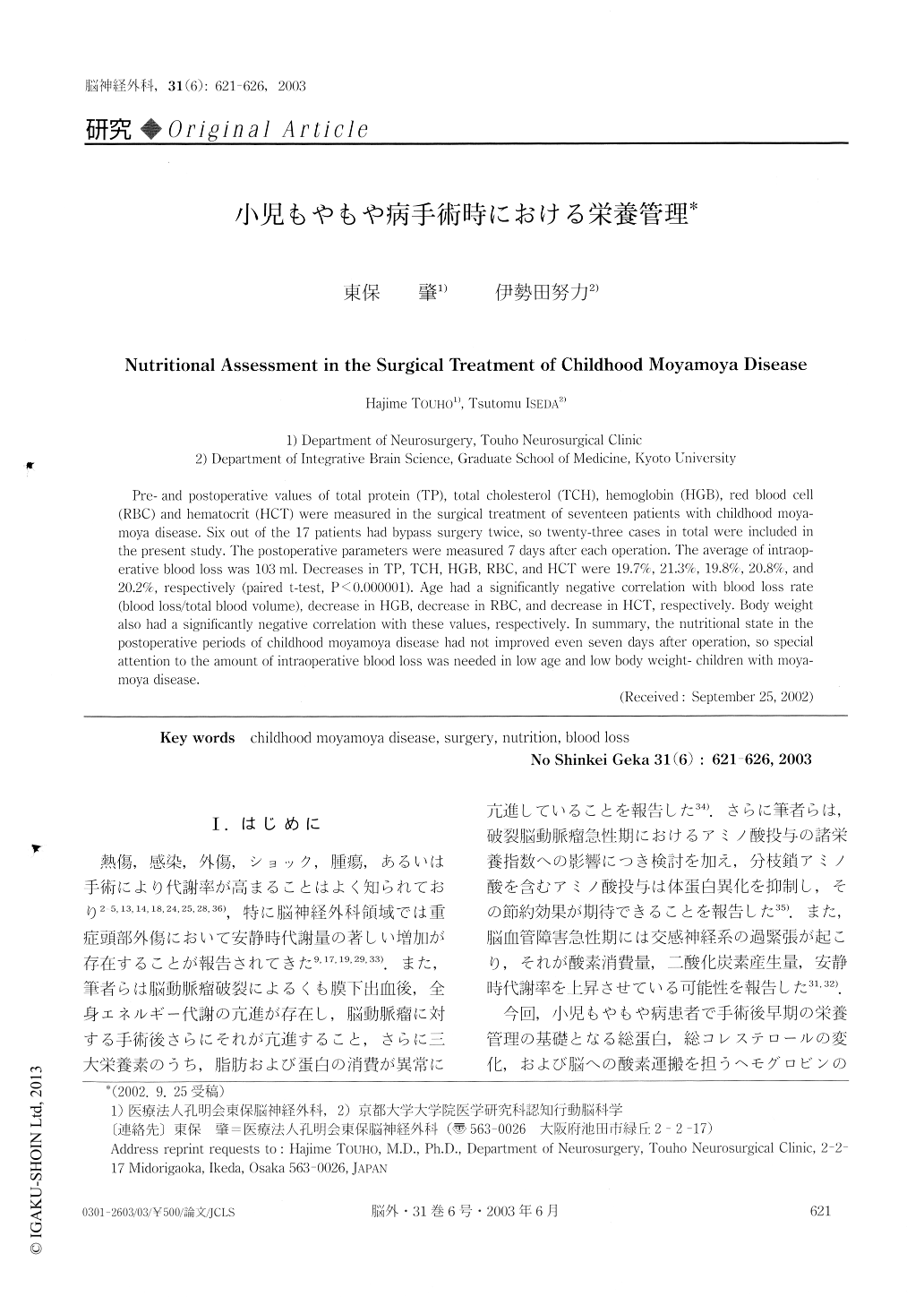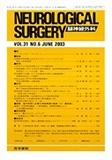Japanese
English
- 有料閲覧
- Abstract 文献概要
- 1ページ目 Look Inside
Ⅰ.はじめに
熱傷,感染,外傷,ショック,腫瘍,あるいは手術により代謝率が高まることはよく知られており2-5,13,14,18,24,25,28,36,特に脳神経外科領域では重症頭部外傷において安静時代謝量の著しい増加が存在することが報告されてきた9,17,19,29,33.また,筆者らは脳動脈瘤破裂によるくも膜下出血後,全身エネルギー代謝の亢進が存在し,脳動脈瘤に対する手術後さらにそれが亢進すること,さらに三大栄養素のうち,脂肪および蛋白の消費が異常に亢進していることを報告した34).さらに筆者らは,破裂脳動脈瘤急性期におけるアミノ酸投与の諸栄養指数への影響につき検討を加え,分枝鎖アミノ酸を含むアミノ酸投与は体蛋白異化を抑制し,その節約効果が期待できることを報告した35).また,脳血管障害急性期には交感神経系の過緊張が起こり,それが酸素消費量,二酸化炭素産生量,安静時代謝率を上昇させている可能性を報告した31,32).
今回,小児もやもや病患者で手術後早期の栄養管理の基礎となる総蛋白,総コレステロールの変化,および脳への酸素運搬を担うヘモグロビンの変化につき検討を加えたので報告する.
Pre- and postoperative values of total protein (TP), total cholesterol (TCH), hemoglobin (HGB), red blood cell (RBC) and hematocrit (HCT) were measured in the surgical treatment of seventeen patients with childhood moya-moya disease. Six out of the 17 patients had bypass surgery twice, so twenty-three cases in total were included in the present study. The postoperative parameters were measured 7 days after each operation. The average of intraop-erative blood loss was 103 ml. Decreases in TP, TCH, HGB, RBC, and HCT were 19.7%, 21.3%, 19.8%, 20.8%, and 20.2%, respectively (paired t-test, P <0.000001).

Copyright © 2003, Igaku-Shoin Ltd. All rights reserved.


